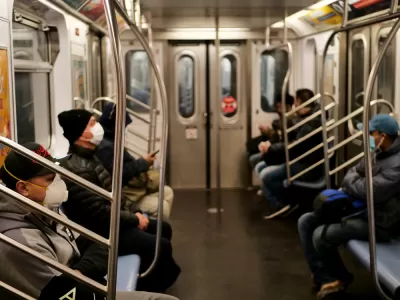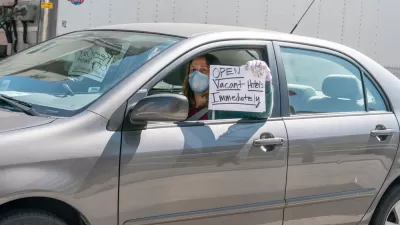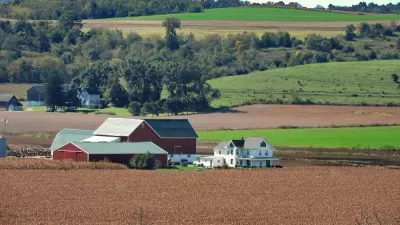There is little evidence that the New York Subway is spreading the coronavirus, according to analysis by Alon Levy.

Alon Levy writes a rebuttal to arguments about the role of the New York Subway in spreading the coronavirus, especially a paper by MIT economist Jeffrey Harris, "claiming that the subways did in fact seed the Covid-19 epidemic in New York." According to Levy, however, Harris cites no evidence in building this argument, and so Levy debunks the paper.
After considering the low infection rates in other high-transit cities worldwide, Levy returns the focus to New York City:
So the question is not whether rapid transit systems are inherently unsafe for riders, which they are not. It’s whether New York, with all of its repeated failings killing tens of workers from exposure to the virus, has an unsafe rapid transit system. Nonetheless, the answer appears to be negative: no evidence exists that the subway is leading to higher infection rates, and the paper does not introduce any.
Levy takes on both of two central claims in the paper—one about infection rates in Manhattan relative to other boroughs and the second about high infection rates in neighborhoods adjacent to subway lines. According to Levy, "neither is even remotely correct."
The details of Levy's counterargument are best left to the source article, which is linked below, although other public health and transit experts also spoke out against the findings of Harris's paper, as evident in an article written by Aaron Gordon for Motherboard.
FULL STORY: The Subway is Probably not Why New York is a Disaster Zone

Planetizen Federal Action Tracker
A weekly monitor of how Trump’s orders and actions are impacting planners and planning in America.

Congressman Proposes Bill to Rename DC Metro “Trump Train”
The Make Autorail Great Again Act would withhold federal funding to the system until the Washington Metropolitan Area Transit Authority (WMATA), rebrands as the Washington Metropolitan Authority for Greater Access (WMAGA).

The Simple Legislative Tool Transforming Vacant Downtowns
In California, Michigan and Georgia, an easy win is bringing dollars — and delight — back to city centers.

The States Losing Rural Delivery Rooms at an Alarming Pace
In some states, as few as 9% of rural hospitals still deliver babies. As a result, rising pre-term births, no adequate pre-term care and "harrowing" close calls are a growing reality.

The Small South Asian Republic Going all in on EVs
Thanks to one simple policy change less than five years ago, 65% of new cars in this Himalayan country are now electric.

DC Backpedals on Bike Lane Protection, Swaps Barriers for Paint
Citing aesthetic concerns, the city is removing the concrete barriers and flexposts that once separated Arizona Avenue cyclists from motor vehicles.
Urban Design for Planners 1: Software Tools
This six-course series explores essential urban design concepts using open source software and equips planners with the tools they need to participate fully in the urban design process.
Planning for Universal Design
Learn the tools for implementing Universal Design in planning regulations.
Smith Gee Studio
City of Charlotte
City of Camden Redevelopment Agency
City of Astoria
Transportation Research & Education Center (TREC) at Portland State University
US High Speed Rail Association
City of Camden Redevelopment Agency
Municipality of Princeton (NJ)





























